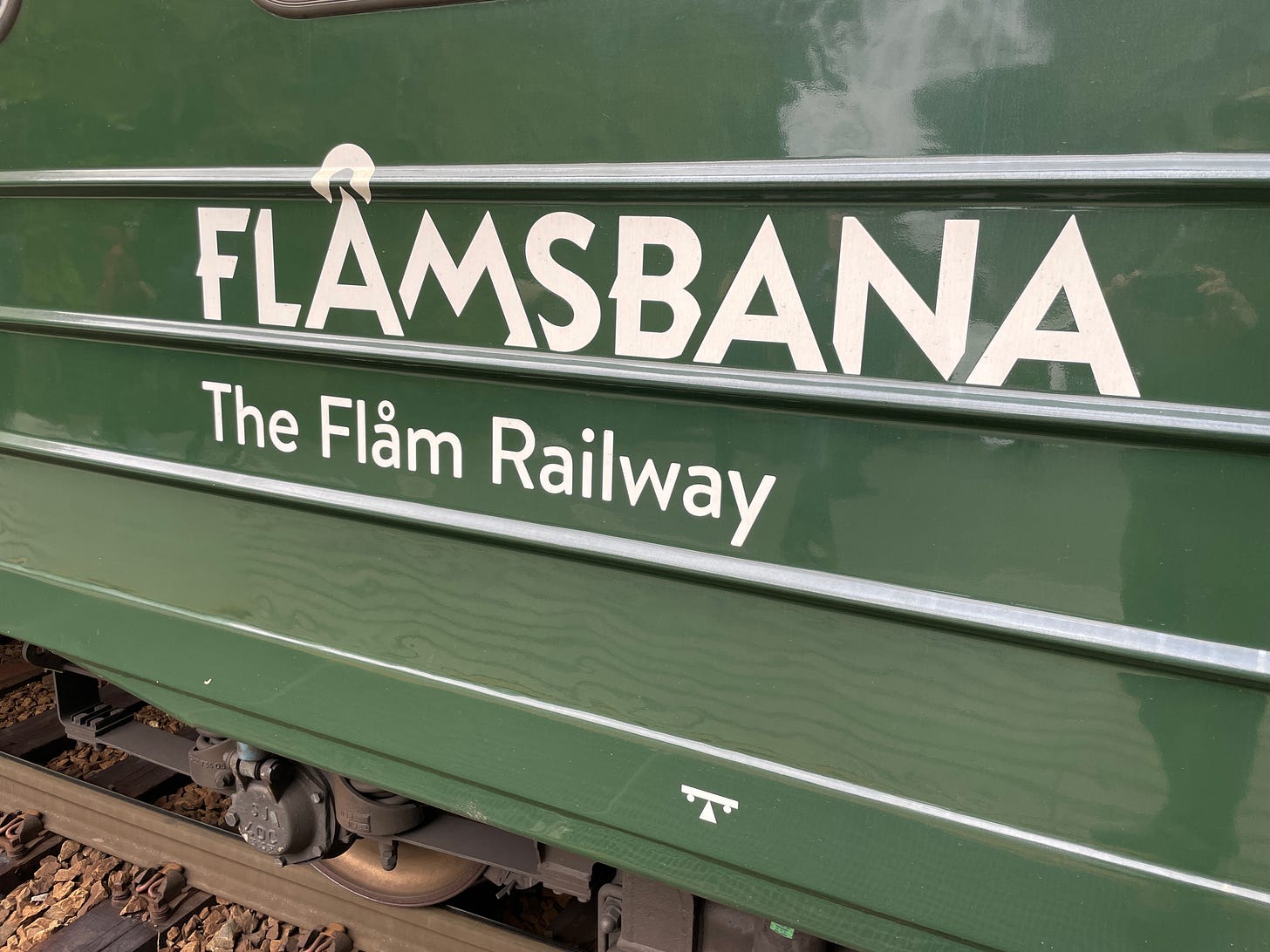Flåmsbana
The Flåm Railway
The Flåm Railway. From Myrdal (Bergensbanen/Oslo Bergen line) to Flåm. Going from nearly 1,000 m altitude to sea level in Aurlandsfjorden, over 20km, completed in about an hour. It stops at Kjosfossen (video opening) and passes by Rjoandefossen (140 m).
4K Video at: https://vimeo.com/askunnr/flamsbana
Flåmsbana has 20 tunnels from the Myrdalsplatået , down the steep valley and to the bottom of Flåmsdalen . Over a stretch of 20.2 kilometers in total, 5.7 kilometers of it runs in a tunnel. That corresponds to more than a quarter of the length of the track.
From the Myrdalsplatået down to the bottom of the Flåmsdalen, the height difference from the highest to the lowest point is 865.5 metres, or a maximum rise of 55.6 ‰. Ivar Gubberud states that 80% of the stretch has an ascent of 55‰. It gives about a rise of 1 meter per 18 meters of running length, and this makes it the second steepest normal gauge adhesion railway in Europe after the Hunsrückbahn in Germany.
The turning tunnel runs in loops on several levels and goes in and out of the mountain. These are necessary so that the rise does not become too violent for ordinary train traffic. Because of the turning tunnels, there are five "levels" of railway tracks in Flåmsdalen below Myrdal station, Flåmsbana has four levels (Myrdalsleitet, Hylla, Baklia and Pinnelia) and above these the tracks of Bergensbanen.
Of the 20 tunnels on the route, a total of 18 are driven by hand. Each meter cost about a month's work. Today, a full-profile machine is often used to drill a tunnel in profile in one operation if the rock is not too hard. Gone are mine drills and dynamite.
At Kjosfossen stop there is also a small power plant .
Flåmsbana crosses the Flåmselvi three times. Instead of bridges, the river is channeled in a tunnel under the railway tracks.



